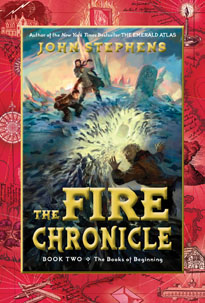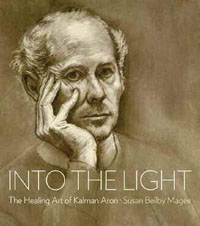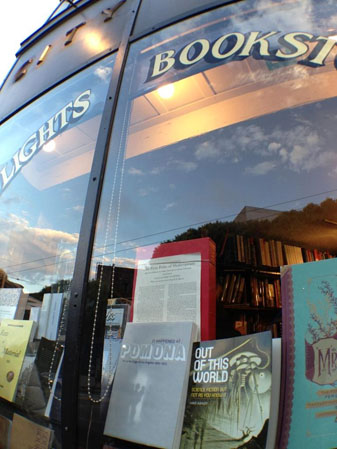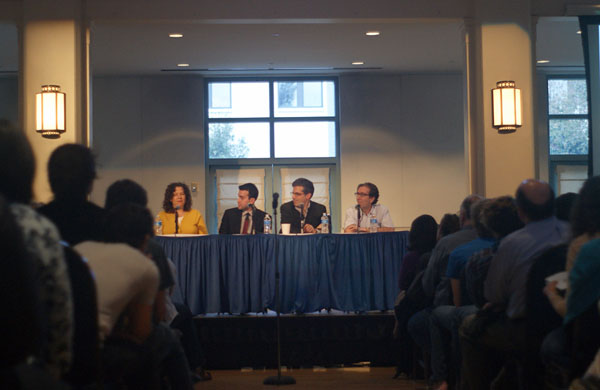Veteran TV writer John Stephens’ (Pomona College Class of ’94) first foray into children’s fantasy books, The Emerald Atlas, was a hit in a hot publishing genre. Now he is back with The Fire Chronicle, the second in the Books of Beginning trilogy. Kirkus Reviews gave the new book, released this fall a starred review: “Irreverent humor and swashbuckling adventure collide in a fetching fantasy.”
 Stephens’ stories follow three children who have been hidden by the wizard Stanislaus Pym at the Edgar Allan Poe Home for Hopeless and Incorrigible Orphans, but are soon discovered by their enemies. In Chronicle, Kate is chased 100 years into the past to a dangerous and enchanted New York City and left searching for her brother and sister, Michael and Emma, who are following clues into a hidden world to find the legendary book of fire.
Stephens’ stories follow three children who have been hidden by the wizard Stanislaus Pym at the Edgar Allan Poe Home for Hopeless and Incorrigible Orphans, but are soon discovered by their enemies. In Chronicle, Kate is chased 100 years into the past to a dangerous and enchanted New York City and left searching for her brother and sister, Michael and Emma, who are following clues into a hidden world to find the legendary book of fire.
Stephens ’94 is already well-established in television, where he spent 10 years as executive producer of Gossip Girl and a writer for Gilmore Girls and The O.C. And while The Emerald Atlas was highly sought after among publishers, Stephens found writing the follow-up brought a new set of challenges, as he describes in this abridged interview:
Is it easier or harder to write the second book in a trilogy?
Writing the second book is both harder and easier. On the easier side, you already have your main characters. You know who they are, their strengths and weaknesses. Also, in a trilogy such as this, you have a certain level of story momentum. There are specific plot points which have to happen. Granted, you want to get to them by unexpected paths, but you know that sooner or later you have to get to them. That said, writing the second is in many ways more difficult than the first. The first I wrote more or less in private, almost on a lark. There was no deadline, no one waiting for the book. I could write in my own time, and if the book ended up stinking, well, no one ever had to know. With the second book, there was a deadline. People were waiting. The pressure was totally different. When you write a first book that ‘works,’ it feels like you somehow managed to pull a rabbit out of your hat in the privacy of your own office. Writing the second book, you’re suddenly on stage in front of a thousand people, and there’s a worldwide rabbit shortage. And you’re naked.
Did you start The Fire Chronicle soon after the first book? How long did it take you to complete it?
I started The Fire Chronicle when I was in the process of selling The Emerald Atlas, which in some ways meant going from one book right into the other. You have to understand, I was kind of terrified. I had managed to write one book, but to me, all that proved was that I could write one book. Who was to say I could write two, much less three? But I’d signed a contract promising three. I had this image where angry publishers would come to my house and take my dog when I failed to produce the books. From my first notes to the locked book was almost exactly two years. Two wonderful, wonderful panic-filled years.
Have you completed book three? What are you working on now?
I have not completed book three. I have done a rough outline and begun writing. Though right now, I’m taking a little bit of a break to direct a couple episodes of television. After two years alone in a room, I worried I was getting a little weird, and I felt it’d be a good idea to venture out into the world before I descend again into my hobbit hole.
–Sneha Abraham

 During his Pomona College days, Dan Hickstein ’06 landed a prestigious
During his Pomona College days, Dan Hickstein ’06 landed a prestigious  The result, nearly 10 years in the making, is Into the Light: The Healing Art of Kalman Aron, co-published in October by Hard Press Editions and Posterity Press, Inc. in association with Hudson Hills Press. A compelling and graceful mix of first-person memoir, biography and commentary, the book is also a comprehensive retrospective of Aron’s work, encompassing 210 stunning color plates and 30 black-and-white images.
The result, nearly 10 years in the making, is Into the Light: The Healing Art of Kalman Aron, co-published in October by Hard Press Editions and Posterity Press, Inc. in association with Hudson Hills Press. A compelling and graceful mix of first-person memoir, biography and commentary, the book is also a comprehensive retrospective of Aron’s work, encompassing 210 stunning color plates and 30 black-and-white images. “I wasn’t going to have anybody write it,” 88-year-old Aron says from his home in Los Angeles, “because I didn’t want to remember it.” Magee, he says, “did a good job.”
“I wasn’t going to have anybody write it,” 88-year-old Aron says from his home in Los Angeles, “because I didn’t want to remember it.” Magee, he says, “did a good job.” The critically-acclaimed, year-long Pomona College Museum of Art exhibition, “
The critically-acclaimed, year-long Pomona College Museum of Art exhibition, “





